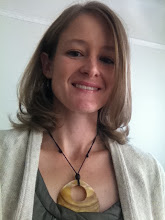I’m working with a pilot cervical cancer screening and
prevention (CCSP) program in a rural area of Kenya on the shores of Lake
Victoria.
I first became interested in this topic while working in
Moshi with Minjeni Women’s Group (some of you may recall the original ‘moshi
moments’ stories). During that time, I learned that cervical cancer – one of
the few highly preventable cancers with early screening!!! – is the leading
cause of cancer death in women in Eastern Africa. And no one knows. So women
get diagnosed when the cancer has reached advanced stages and all that can be
offered is palliative care. Oftentimes even getting palliative care is a
challenge. So women are dying. They are dying painfully. They are dying
unnecessarily. They are dying without anyone saying a word. And when you hear a
story like that, it’s hard to forget.
I couldn’t forget. Throughout medical school, it kept coming
back to me. We had tried to link women in Moshi to screening services, but the
screening services were practically non-existent. We failed. But I couldn’t
forget. In medical school, I got involved with some research examining
provider’s knowledge of the HPV vaccine, I joined forces with a similarly crazy
med student to start a women’s clinic offering pap smears to homeless women
(and now trying to offer Garadasil, the HPV vaccine), and I kept thinking about
the women back in East Africa dying of a preventable cancer.
It only seemed natural that when I started to look at research
fellowships back in Africa, that I would hone in on cervical cancer screening
projects. And so I found my way into a research project in Kenya run through
Family Aids Care and Educations Services (FACES), a partnership between UCSF
and the Kenyan Medical Research Institute. I received funding through the Doris
Duke Clinical Research Fellowship and launched myself into a year dedicated to
improving cervical cancer screening in a little place on the lake.
So that’s how it all started. Now I’ll tell you a bit about
what I’m “supposed” to be doing and what I’m actually doing. For the fellowship, I designed a study to look at
how we can improve patients’ understanding of cervical cancer screening and
thus improve screening uptake. My study design is a randomized control trial of
an educational intervention. That’s a fancy way of saying that I am dividing
women into two groups – one group gets a short health talk about cervical
cancer and the other group doesn’t. Then we compare the two groups by surveying
them about their knowledge and attitudes and then checking to see who
ultimately goes for screening. It’s a simple idea that I spent months pouring
over the details of how to execute. And then I spent several more months
waiting for approval to start my project.
See, all clinical research must first be reviewed and
approved by an ethical review committee before it can commence. This is
generally a good thing. It serves as an important check to ensure that patients
are not being put at undue risk for harm and that they are properly consented
about any research in which they participate. Unfortunately, it can also be the
bane of a researcher’s existence. The waiting game in Africa is notorious and
naturally, ethical review is no exception. So I have spent the first
three-quarters of my fellowship (yes, 9 months) waiting. Waiting is not so bad
when you know you have to wait. What is challenging is the continuous string of
“tomorrows”… the anticipation that approval is just around the corner… the
frenzies of preparation that are ultimately wasted. As the cycle repeats
itself, you finally learn to stop preparing, to stop expecting. And when you
finally release your expectations, a subtle calm creeps in and a way forward
emerges.
For the last several months, I have been visiting our screening
sites. I’ve mainly been learning how to drive on insane 4WD roads and fix my
car when it breaks - seriously two of my biggest accomplishments this year.
I’ve also been trying to understand what is going on at our screening sites and
trying to provide support and ideas for improving screening, but never
launching into full-blown program management mode because every other week I
thought I’d soon be pulled into full-blown researcher mode. And then a little
over a month ago, I gave up. I fully released this idea that my intended study
would ever start. And I ramped into program evaluation and improvement mode. I started thinking more long-term, more
big-picture. And I loved it. I don’t regret my first several months here. I think
my expectations of starting a study helped keep me in a place where I was able
to observe, build relationships, and slowly understand the reality of the
barriers to screening. I found myself pulled into the service delivery
challenges at the various health facilities – the systemic challenges of
inconsistent supplies and staffing shortages that chronically plague the
health-care system in Kenya. I stumbled upon the science of program
implementation.
So I am now in full-blown program evaluation mode, trying to
figure out how a small research-based screening program can be scaled up and
ultimately be incorporated into a national screening program. Big dreams. It
will take time. But I’ve learned how to wait… until tomorrow. In the meantime,
I’ll practice driving through the mud.
